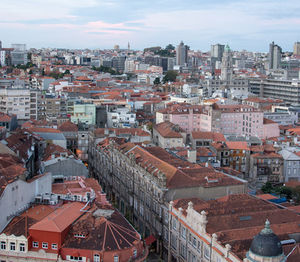Urban tourism
| Urban tourism |
|---|
| See also |
Urban tourism is a term describing multiple tourist activities in which city is main destination and place of interest. This form of tourism is relatively old and very complex. Cities were always purpose of many journeys and trips although it becomes more and more popular phenomenon since 50's. As a subject of research urban tourism didn't exist before 80's and till 90's was very underestimated. Tourism within cities is strongly connected with their growth and technology development as well (roads, transportation, railway).
Travelling to cities became easier, faster and in many cases cheaper than it was decades ago. Important fact is that the awareness of possibilities that come with urban tourism rose significantly over the years.
Urban tourism products
City can offer variety of products or services which become objects demanded by people on the tourist market. Product, which city has to offer for tourists, can be anything material or non material, i.e. specific location, particular place (museum, cultural, religious, entertainment), city services or even specific city development (transport, building, architecture).
In literature there are many examples of urban tourism products like sport areas and festivals, events created to attract international and domestic tourists. Urban tourism includes many other types of tourism for example cultural tourism as culture is one of the most important motives for travelling.
In cities different forms of tourist activities are concentrated:
- sightseeing,
- leisure,
- shopping,
- visiting friends and family,
- religion,
- business venues,
- participation in congresses, conferences,
- entertainment (events, clubs),
- trainings,
- transport.
All the activities listed above are included in term in-the-city tourism, however they are not always identified as urban tourism, and could be part of other types of tourism (e.g. religious, cultural).
Growth of tourism in the cities is connected with main attributes of the city such as:
- number and diversity of attractions,
- proximity to other attractions,
- level of transport,
- quality and size of accommodation,
- effectiveness of marketing and promotion.
Typical urban tourism attractions
- historical monuments, ancient statues, unique street patterns,
- museums, art galleries,
- cinemas, concert venues, concert halls, theatres,
- convention centres, conference centres,
- nightclubs, bars, dance clubs, casinos,
- cafes, restaurants,
- shopping centres, fashion shows,
- sport facilities, amusement facilities, organized events,
- parks, green areas, botanic gardens.
Effect of urban tourism
Dynamic development of urban tourism is source of employment and growing incomes in the urban areas as well as cause of cultural and social growth (increased quality of life, income redistribution). However it brings also negative effects such as air pollution, noise and decreased availability of the city centre and attractions important to local inhabitants (parks, cultural and recreational areas).
Trends in alternative tourism
As mass urban tourism may affect the areas nowadays it is popular to speak about sustainable urban tourism (i.e. alternative tourism). Sustainability is popular in many fields, in urban tourism it considers meeting needs of tourists and needs of local people at the same time.
Popular trend among tourists is to spend rather shorter (2-7 days) periods of time in the urban areas (weekend breaks, city breaks).
Urban tourism paradoxes
- it is hard to explain why people are attracted to visit some cities, answering question Why visit cities? involve analysing broad range of human motivations without any distinctive factor,
- selectivity - tourists usually use only a very small portion of all that city has to offer,
- rapidity - length of stay in city is relatively short,
- repetition - tourist usually don't go back to city visited,
- capriciousness - tourist are susceptible to fashion, they often change taste and attitudes towards tourists attractions,
Urban tourism top destinations
- Hong Kong,
- London,
- Singapore,
- Bangkok,
- Paris,
- Macao,
- Shenzhen,
- New York City,
- Istanbul,
- Bali,
- Rome,
- Barcelona.
See also:
References
- Ashworth, G., & Page, S. J. (2011). Urban tourism research: Recent progress and current paradoxes. Tourism Management, 32(1), 1-15.
- Bramwell, B. (1998). User satisfaction and product development in urban tourism. Tourism Management, 19(1), 35-47.
- Douglas, N., & Derrett, R. (2001). Special interest tourism. John Wiley and Sons Australia, Ltd.
- Edwards, D., Griffin, T., & Hayllar, B. (2008). Urban tourism research: developing an agenda. Annals of Tourism Research, 35(4), 1032-1052.
- Gospodini, A. (2001). Urban design, urban space morphology, urban tourism: an emerging new paradigm concerning their relationship. European Planning Studies, 9(7), 925-934.
- Law, C. M. (1993). Urban tourism: attracting visitors to large cities. Mansell Publishing Limited.
- Maitland, R., & Ritchie, B. W. (Eds.). (2009). City tourism: National capital perspectives. Cabi.
